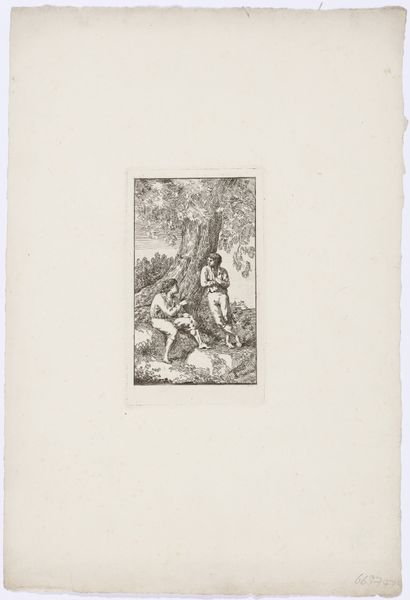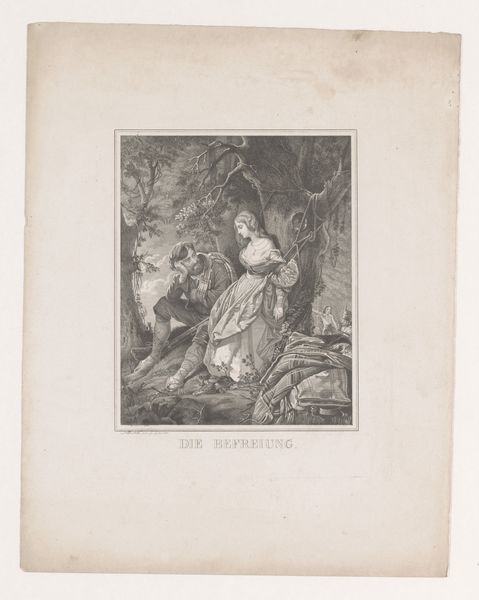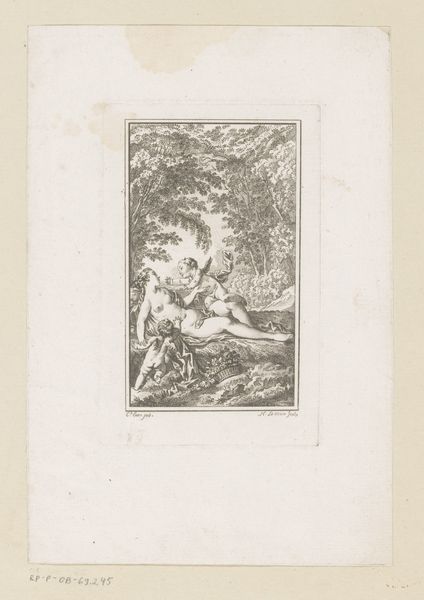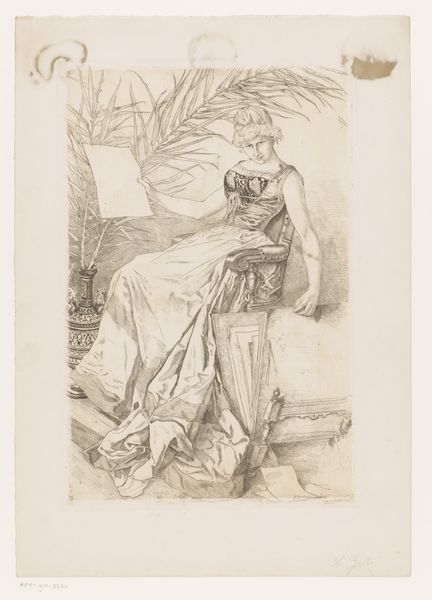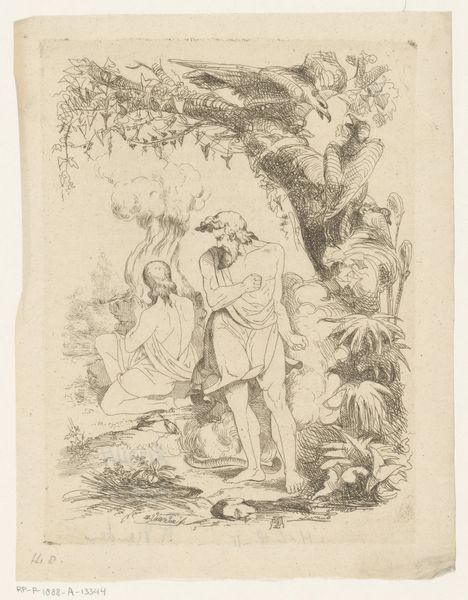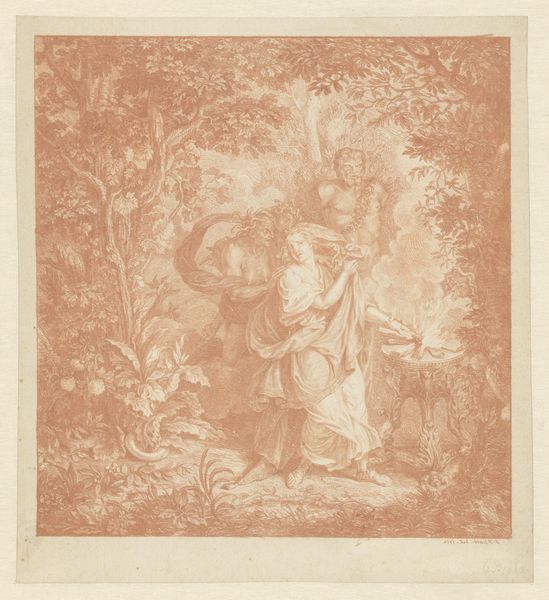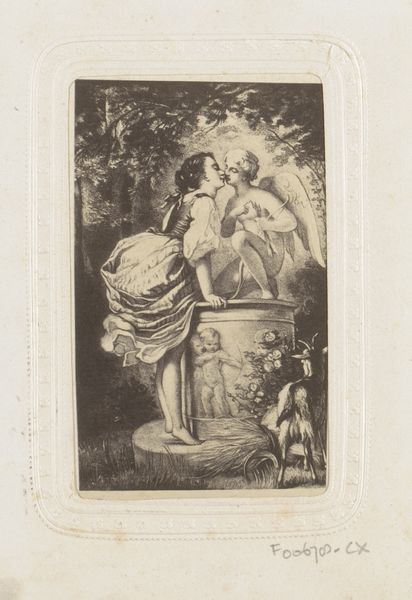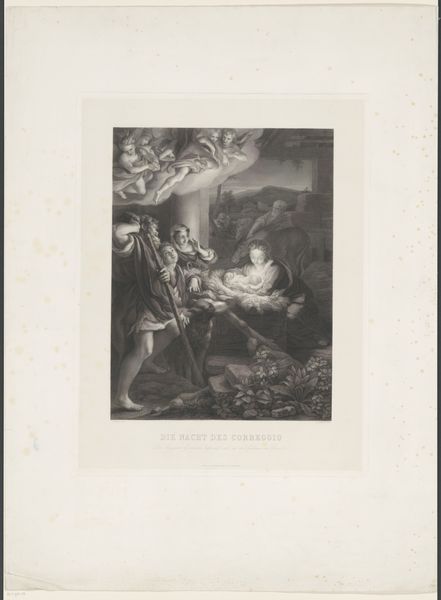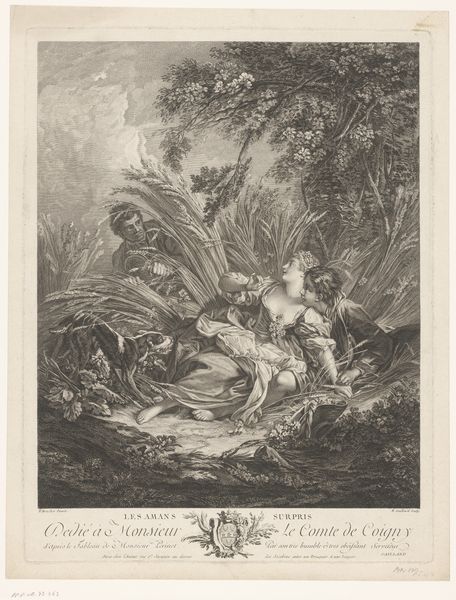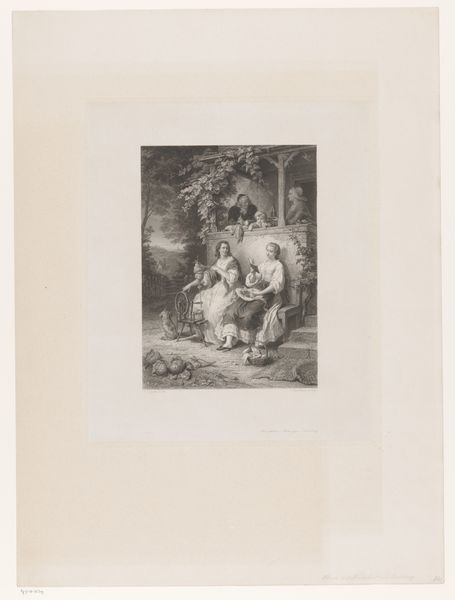
Plate 3: Shepherd tickling a sleeping Shepherdess with a piece of straw, from Troisieme Livre de Sujets et Pastorales (Third Book of Subjects and Pastorals) 1720 - 1772
0:00
0:00
drawing, print, etching
#
drawing
#
narrative-art
# print
#
etching
#
landscape
#
figuration
#
genre-painting
#
erotic-art
#
rococo
Dimensions: Plate: 10 1/4 × 8 1/16 in. (26 × 20.5 cm) Sheet: 13 3/8 × 9 5/8 in. (34 × 24.4 cm)
Copyright: Public Domain
Curator: This etching by Gabriel Huquier, dating somewhere between 1720 and 1772, is called "Plate 3: Shepherd tickling a sleeping Shepherdess with a piece of straw, from Troisieme Livre de Sujets et Pastorales." I have to say, there is something wonderfully playful about this scene that immediately grabbed my attention. It's like a stolen moment of lighthearted mischief. Editor: My first thought goes straight to the male gaze. We’re squarely in a Rococo fantasy here, right? The sleeping shepherdess becomes the object of playful eroticism in what is very obviously staged rural innocence. Curator: Staged, maybe, but undeniably charming! The delicacy of the etching really amplifies the idyllic setting—all soft lines and dappled sunlight. Do you not find the composition somewhat dreamlike? It reminds me of half-remembered afternoons spent lazing in fields. Editor: It is incredibly seductive! This kind of pastoral fantasy plays into deeply problematic tropes – namely, a glorification of the aristocracy and a dangerous downplaying of economic disparities in rural settings. The whole idea of "simple" pleasures can be deeply loaded, particularly in a pre-revolutionary context like 18th century France. Who gets to be carefree? Who is allowed to rest? And at whose expense? Curator: Those are certainly valid questions. Yet, consider the era—didn’t art then often act as an escape valve from reality, rather than a direct reflection of it? Maybe there is also something profoundly human here—that desire to break free from responsibilities and simply enjoy a fleeting moment of whimsy? I suppose I see it as an almost nostalgic, idealized retreat. Editor: Perhaps. However, such "escapes" always exist in relation to a grimmer reality. The art historical fascination with shepherdesses is an appropriation of labor – one that masks the lived experience of working-class women in favor of aristocratic diversions. It’s imperative that we recognize the potential for these romanticized scenes to obfuscate those systemic inequalities. Curator: So perhaps a whimsical fantasy tainted by historical awareness—quite the mixed bag, then. It certainly makes you think, doesn't it? Editor: Indeed. This reminds me we have so much to do to broaden art history to reflect intersectional perspectives. We need that friction between different readings.
Comments
No comments
Be the first to comment and join the conversation on the ultimate creative platform.
